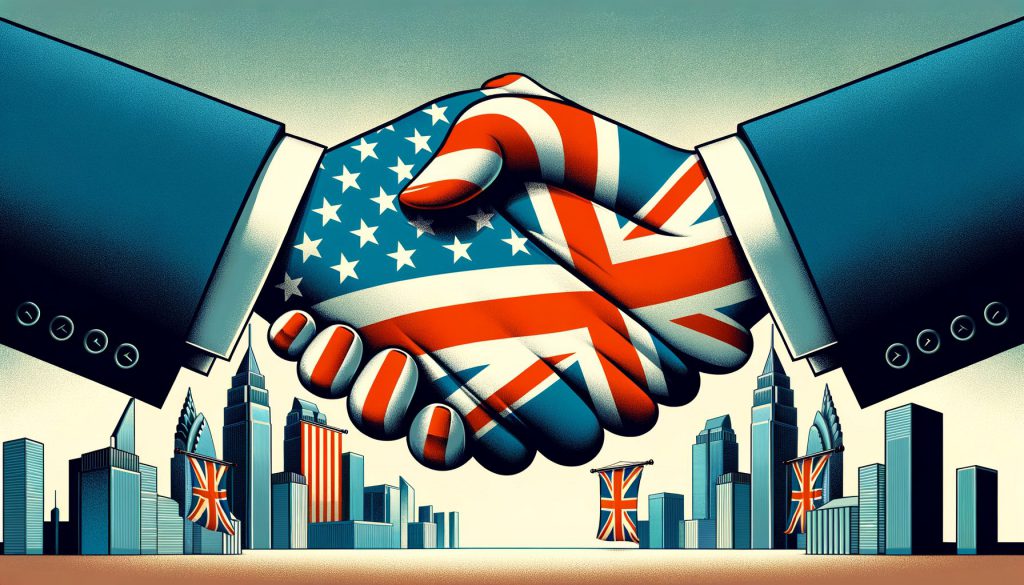Trump’s UK Trade Deal Unleashes $5B Export Boom—While Taking Swipe at China
Washington just fired a double-barreled trade salvo. The newly inked UK deal cracks open markets for $5 billion in US goods—from bourbon to beef—while delivering a not-so-subtle dig at Beijing’s economic policies.
Behind the headlines: This ’America First’ playbook leverages post-Brexit Britain as a strategic ally. The agreement bypasses WTO red tape through bilateral terms that favor US manufacturers.
The cynical take: Wall Street’s already pricing in the deal’s expiration after 2024—because nothing fuels commerce like political uncertainty and short-termism.
UK Trade Deal Reshapes Global Policy, Hits China, Lifts US Exports

Deal Structure Favors American Agriculture
Officials revealed Trump’s UK trade agreement at a May 8th WHITE House ceremony, structuring it around increasing exports from America and controlling import parameters. At present, American agribusinesses can secure considerable new opportunities in the UK market, opening up over $700m in ethanol exports and around $250m worth of other agricultural goods.
President Trump stated:
Trump’s UK trade deal specifically addressed UK barriers that previously restricted American products. The deal reduced or eliminated non-tariff restrictions that limited US exports, which will allow American farmers much greater access to British markets going forward.
Auto and Metal Industries Given Special Considerations
This comprehensive US exports agreement carved out exceptions for crucial manufacturing sectors. The first 100,000 vehicles imported annually from UK manufacturers will be subject to the standard 10% reciprocal rate, while any additional vehicles beyond this quota face a higher 25% tariff.
The agreement will also address steel and aluminum imports from the UK through a new trading arrangement. Both nations have committed themselves to negotiating an alternative to current tariffs on these metals, and they are establishing a dedicated trading union for steel and aluminum products at this time.
China Faces Continued Pressure
While most nations had their reciprocal tariffs paused until early July, China remains the primary target of aggressive US trade policy. The administration has increased tariffs on Chinese imports to as high as 145%, reflecting their continued focus on reducing trade imbalances with China.
The UK free trade agreement stands in stark contrast to America’s approach toward China. Trump’s broader tariff strategy has targeted approximately 60 countries that charge higher duties on US goods, though most of these have received temporary relief from the highest rates.
Prime Minister Starmer stated:
Impact on American Consumers Remains Uncertain
The long-term effects of Trump’s UK trade deal on American consumers remain to be seen. Industry groups have expressed some concerns about the broader tariff strategy implemented by the administration in recent months.
David French, NRF executive VP of government relations, said:
“Secure Supply Chain” Partnerships Being Formed
A particularly notable part of this plan to US exports involves setting up what the White House labels a “secure supply chain” for pharmaceuticals. This arrangement seeks to address vulnerability from global supply disruptions and it should also ensure the availability of critical drugs for both countries.
This establishment of SAFE supply chains is a strategic change in the policy of the world trade war from being based solely on economic factors towards a priority of national security. This strategy is in line with the greater overtures by the administration of minimizing dependence on unreliable trading partners, especially China.
The US and UK conducted a staggering $148 billion in combined goods trade for the year 2024, giving a strong base to this enlarged partnership. As the strains with China continue to increase, Trump’s UK trade deal showcases a tendency to make good terms with strategic allies.

